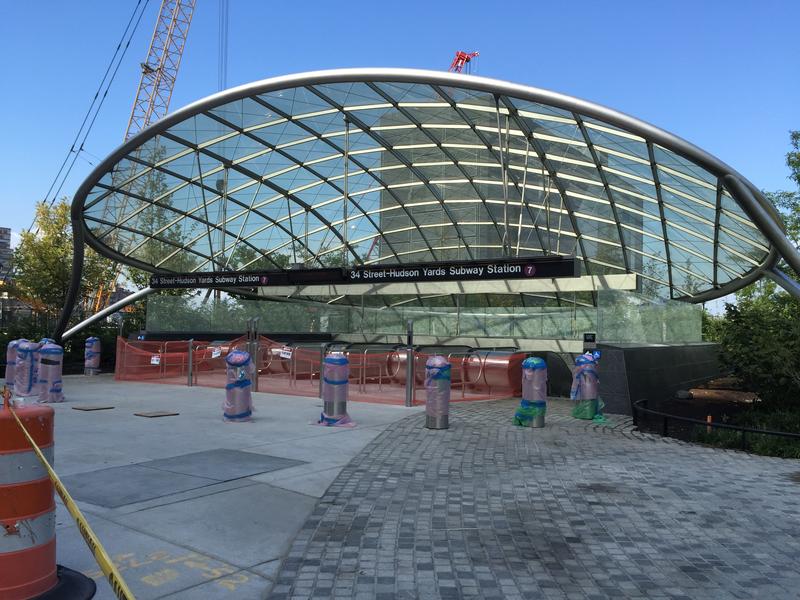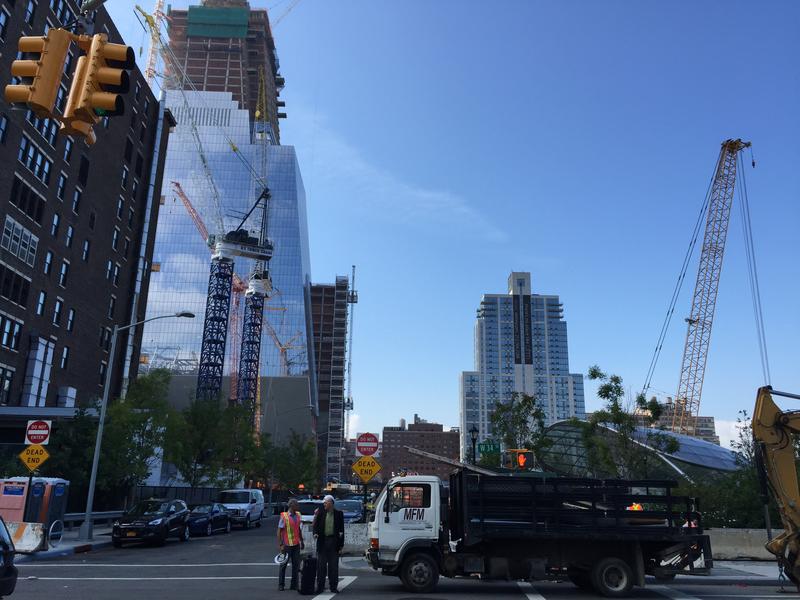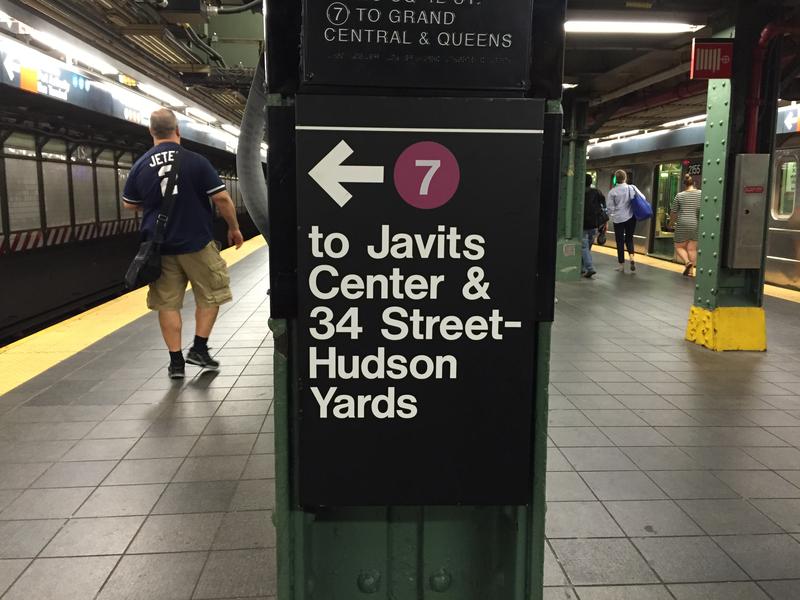 Transportation Nation
Transportation Nation
New Football Stadium? No. New Neighborhood? Sort of. New Subway Station? Yes.

This weekend, the city will open its first new subway station in decades: the $2.4 billion extension of the No. 7 train to 34th Street and 11th Avenue, which will bring the subway into the heart of Hudson Yards, the new development taking place on Manhattan's far West Side.
The station was originally part of Mayor Michael Bloomberg's plan to build a stadium on a parcel of land near the Javits Center. The stadium, he said, would lure both the Jets and the 2012 Olympics to New York City.
Those projects failed — two of Albany's so-called "three men in a room" killed the stadium, which in turn helped doom the Olympic bid. But the subway survived, and plans to rezone the neighborhood were passed in 2005.
The neighborhood is still very much a work in progress. Earlier this week, the newly-built public plazas outside the subway entrance were empty, save for a construction worker.
Even though cranes dot the sky, the pace of construction has lagged, in part due to the 2008 recession. That's had serious financial repercussions because of the unusual way in which the city is paying for the line. Typically, a new subway station would come out of the MTA's budget. Instead, the city took financial responsibility, and the Bloomberg administration did something different, a version of what's called 'value capture.' The city borrowed money to pay for the new subway. Then, it began taking the property tax revenue from all the new construction from a specific area on the far West Side and used it to pay the interest (and eventually the principle) back on the bonds.
The city's original projections anticipated collecting $563 million from property taxes and air rights by now. But only about half of that has come in. So the city has paid $358.8 million toward interest on the bonds. It always expected to kick in money for the project, but not for as long or as much.
Work on the No. 7 extension also got off schedule. Following a 'soft' opening in 2013, an event manufactured so that that Michael Bloomberg could ride the new line while while in office, it took the MTA extra time to resolve some problems.
Meanwhile, critics have questioned the tax breaks that were part of the deal. To entice development, the city said developers only had to pay 60 percent of their property tax revenue for the first four years, with a sliding scale upwards for 20 years. That means that at the same time the city is counting on tax revenue to fund the subway extension, it's reducing the taxes collected from the project. James Parrott, chief economist at the Fiscal Policy Institute, says that shifts the burden to other taxpayers throughout the city and sets a bad precedent. "They've compromised the city's property tax base for decades to come," he said.
But even with the money coming in more slowly than anticipated, the Bloomberg Administration had — and the de Blasio Administration still has — high hopes for the area. The mayor's office says the project will bring in $37 billion in tax revenue through 2050, thanks to the new station. "This is really the anchor of the biggest construction project in New York City," deputy mayor Alicia Glen said in a statement. "Smart growth, living wage jobs, development that keeps us competitive on the world stage — we're thrilled to see this project in full swing and getting better every day."
The new subway station will open to the public this Sunday.


